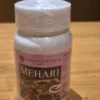Patola
|
Botanical Name |
Tricosanthes Diocia Roxb |
|
Family |
Cucurbitaceae |
|
Sanskrit |
Patola |
|
English |
Pointed Gourd |
|
Hindi |
Parval |
|
Kannada |
Kadu-Padaval |
|
Malayalam |
Patolm |
|
Telugu |
Kommupodalai, Peyu,Podal |
|
Tamil |
Kambu Podalai |
|
Marathi |
Distribution
It is distributed throught the plains of north india extends to assam and bengal
|
Parts Used |
Fruits, Leaf, Root |
|
Dose |
Swarasa-10-20ml |
Chemical Constituents
Nicotinic acid, riboflavin, thimine, linoleic acid, cucurbita
Ayurvedic Properties
|
Quality (Guna) |
Laghu, Ruksha |
|
Taste (Rasa) |
Tika, Katu |
|
Metabolism (Vipaka) |
Katu |
|
Potency (Virya) |
Ushna |
|
Impact (Prabhava) |
Vrsya, Varnya, Deepana |
Pharmacological Action
- Kaphapittahara
- Vrshya
- Pachana
- Deepana
- Krimigna
- Hridhya
- Unripened fruit is good source of calcium, iron and phosphorus
- Decoctions of leaves used for amenorrhoea
- Used as purgative
- Juice of leaves for externally for sores and various animal bites
Therapeutic Uses
- Jvara
- Kusta, seed oil used for dermatitis
- Amlapitta
- Daha
- Khalitya
- Medoroga
Some of the common formulations
- Patoladi ghrita
- Patoladi choorna
- Patoladi kashaya
- Kalingadi kwatha




